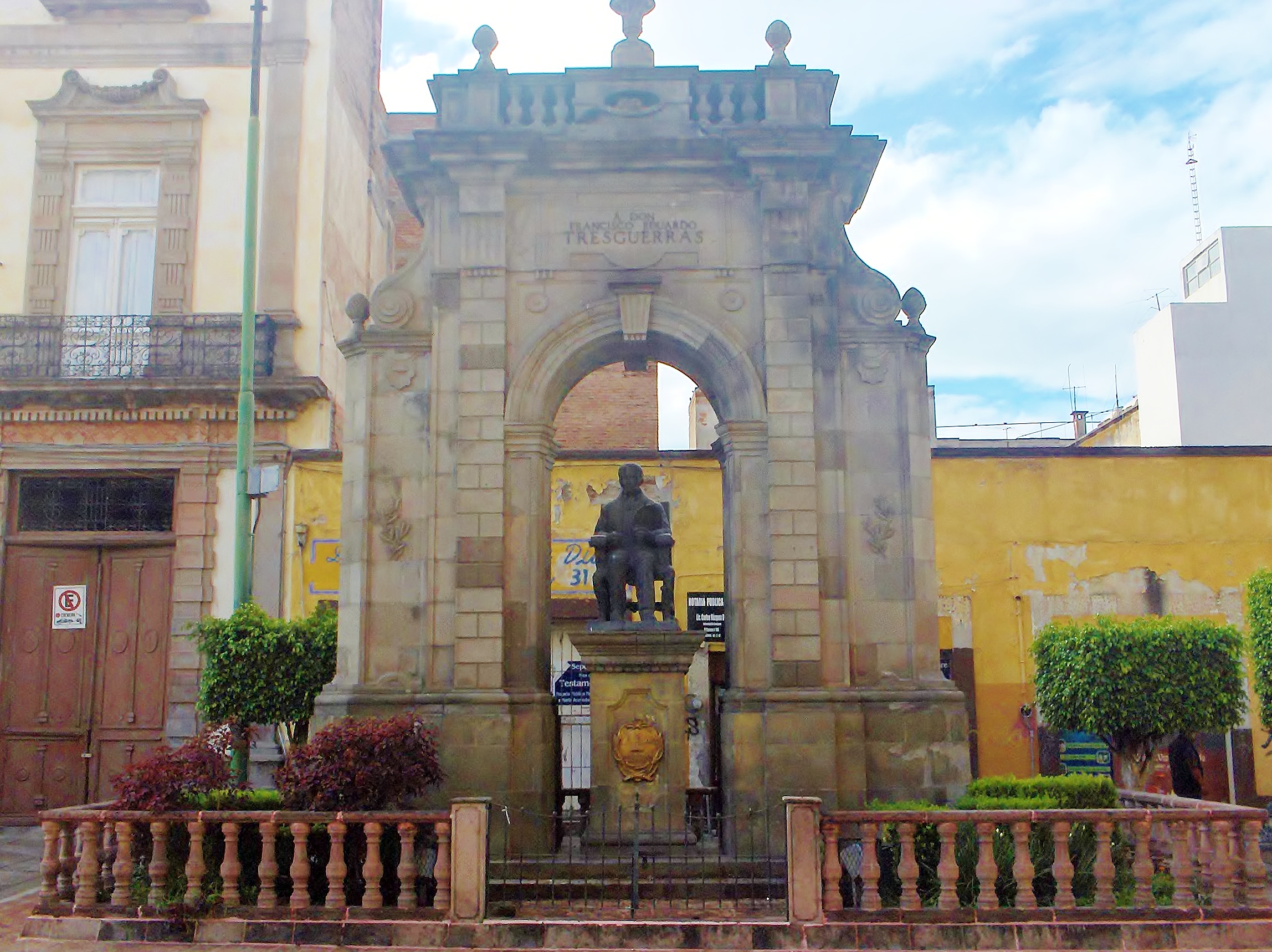Francisco Eduardo Tresguerras on:
[Wikipedia]
[Google]
[Amazon]
Francisco Eduardo Tresguerras (October 13, 1759,

Brief biography
(photo) {{DEFAULTSORT:Tresguerras, Francisco Eduardo Mexican architects 18th-century Mexican painters 18th-century male artists Mexican male painters 19th-century Mexican painters 1759 births 1833 deaths People from Celaya Artists from Guanajuato 19th-century Mexican male artists
Celaya
Celaya (; ) is a city and its surrounding municipalities of Mexico, municipality in the state of Guanajuato, Mexico, located in the southeast quadrant of the state. It is the third most populous city in the state, with a 2005 census population of 3 ...
, Guanajuato
Guanajuato (), officially the Free and Sovereign State of Guanajuato ( es, Estado Libre y Soberano de Guanajuato), is one of the 32 states that make up the Federal Entities of Mexico. It is divided into 46 municipalities and its capital city i ...
– August 3, 1833, Celaya) was a prominent Mexican architect and a painter. He was active during the colonial period and early independence.
Biography
Believing he had a religious vocation, he entered a monastery in Mexico City, but soon changed his mind and returned to Celaya and was married. He began working as an artist — painting, sculpture and engraving. He soon requested permission to work as an architect. His first architectural works were the Fountain of Neptune (1797) and an arch commemorating the proclamation of Charles IV as king. Both of these are inQuerétaro
Querétaro (), officially the Free and Sovereign State of Querétaro ( es, Estado Libre y Soberano de Querétaro, links=no; Otomi language, Otomi: ''Hyodi Ndämxei''), is one of the Political divisions of Mexico, 32 federal entities of Mexico. I ...
.
From 1802 through 1807 he worked rebuilding the church of El Carmen in Celaya, in a Neoclassical style. This is considered his greatest work. The church presents three Neoclassical façades, above which rises a tower ending in a bell shape. This was a novelty in New Spain at the time of its construction. The church also includes a graceful tiled dome above the crossing and a lateral façade showing French influence. Tresguerras also executed some of the sculptures in this church.
In the same city he designed the chapel for his interment in the church of San Francisco, and a bridge over the River La Laja. In Guanajuato City
Guanajuato () is a city and municipal seat of the municipality of Guanajuato in central Mexico and the capital of the state of the same name. It is part of the macroregion of the Bajío. It is in a narrow valley, which makes its streets narrow a ...
the palace of the Count of Casa Rul is his. Professionally, he traveled widely in the central part of the country. He is also credited with other buildings in San Luis Potosí
San Luis Potosí (), officially the Free and Sovereign State of San Luis Potosí ( es, Estado Libre y Soberano de San Luis Potosí), is one of the 32 states which compose the Federal Entities of Mexico. It is divided in 58 municipalities and i ...
, San Miguel el Grande
San Miguel El Grande is a town and municipality in Oaxaca in south-western Mexico. The municipality covers an area of 4705 km².
It is part of the Tlaxiaco District in the south of the Mixteca Region
The Mixteca Region is a region in the st ...
, Salvatierra Salvatierra may refer to:
Places
;Mexico
* Salvatierra, Guanajuato, a municipality in the state of Guanajuato
;Spain
* Salvatierra (comarca), a subcomarca of Guijuelo in the province of Salamanca, Castile and León
* Berrocal de Salvatierra, a mun ...
, Salamanca
Salamanca () is a city in western Spain and is the capital of the Province of Salamanca in the autonomous community of Castile and León. The city lies on several rolling hills by the Tormes River. Its Old City was declared a UNESCO World Heritag ...
, Irapuato
Irapuato is a Mexican city (and municipality) located at the foot of the Arandas Hill (in Spanish: ''Cerro de Arandas''), in the central region of the state of Guanajuato. It lies between the Silao River and the Guanajuato River, a tributary of t ...
, and some towns in Jalisco
Jalisco (, , ; Nahuatl: Xalixco), officially the Free and Sovereign State of Jalisco ( es, Estado Libre y Soberano de Jalisco ; Nahuatl: Tlahtohcayotl Xalixco), is one of the 31 states which, along with Mexico City, comprise the 32 Federal En ...
.
Among his paintings are a portrait of his wife (1787), a self-portrait (1794) and two frescos in the church of El Carmen in San Luis Potosí. There is also a ''El Juicio Final'' (''Last Judgment'') in the chapel of Los Cofrades in the church of El Carmen de Celaya.
Tresguerras also wrote devotional works and poetic satires. A notebook of critical notes was published, unedited, in 1962 under the title ''Ocios literarios''. His friends wrote a biographical sketch entitled ''Tres zamoranos ilustres''. This remained unpublished until 1951, when it appeared in Morelia.
Tresguerras was arrested in 1811 for sympathy with the independence movement.
The Museo Nacional de Artes Plásticas in Mexico City contains several of his works:
*''La Virgen del Carmen''
*''Santa Rosa de Viterbo''
*''Educación de la Virgen''

References
* ''15,000 Nuevas Minibiografías''. Panama City: Editorial América, 1989. * "Celaya, Diócesis de," ''Enciclopedia de México'', vol. 3. Mexico City: 1987. * "Tresguerras, Francisco Eduardo de," ''Enciclopedia de México'', vol. 13. Mexico City: 1987. * Villegas, Víctor Manuel, ''Tresguerras, arquitecto de su tiempo''. 1964. * Diccionario de Arte, ''Pintores del siglo XIX,'' Editorial LIBSA, 2001. .External links
Brief biography
(photo) {{DEFAULTSORT:Tresguerras, Francisco Eduardo Mexican architects 18th-century Mexican painters 18th-century male artists Mexican male painters 19th-century Mexican painters 1759 births 1833 deaths People from Celaya Artists from Guanajuato 19th-century Mexican male artists